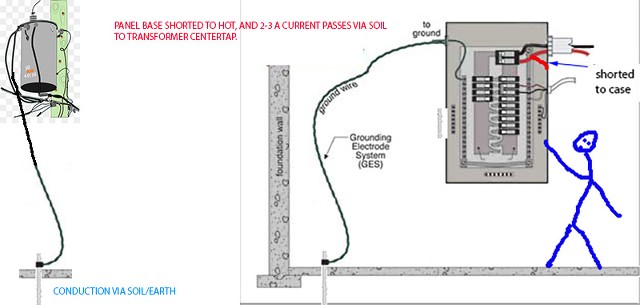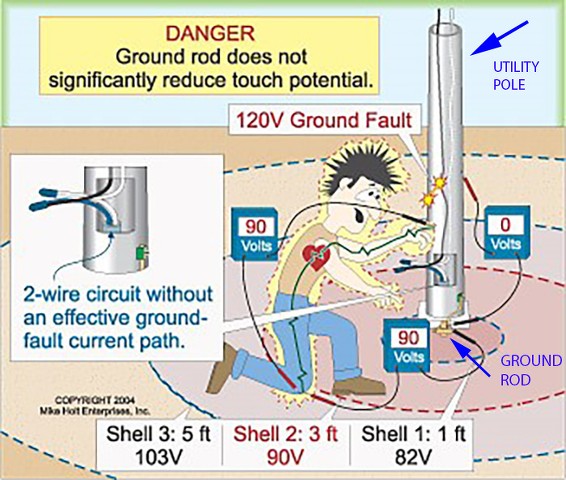
Supposed there was no neutral going into the house (just for sake of discussion), and you only have the 2 pole 240v powering your house.
If one of the hots shorts to the main panel metal enclosure. With a good ground rod, you'd expect between 2-3 A at 120V through ground back to the transformer grounded center tap.
Now the person who touches the hot shorted metal enclosure with the fingers touching the hot shorted enclosure and his bare feet touching the ground .
Is he as same potential as ground if his bare feet touch ground? Would he get a shock? Would the 2-3 A passes through him? Note since his bare feet is some distances away from the local ground rod. I wonder if there is potential differences between his bare feet and that of local ground rod.
What does NEC and other codes say about this, and theoretical considerations?
Last edited:




